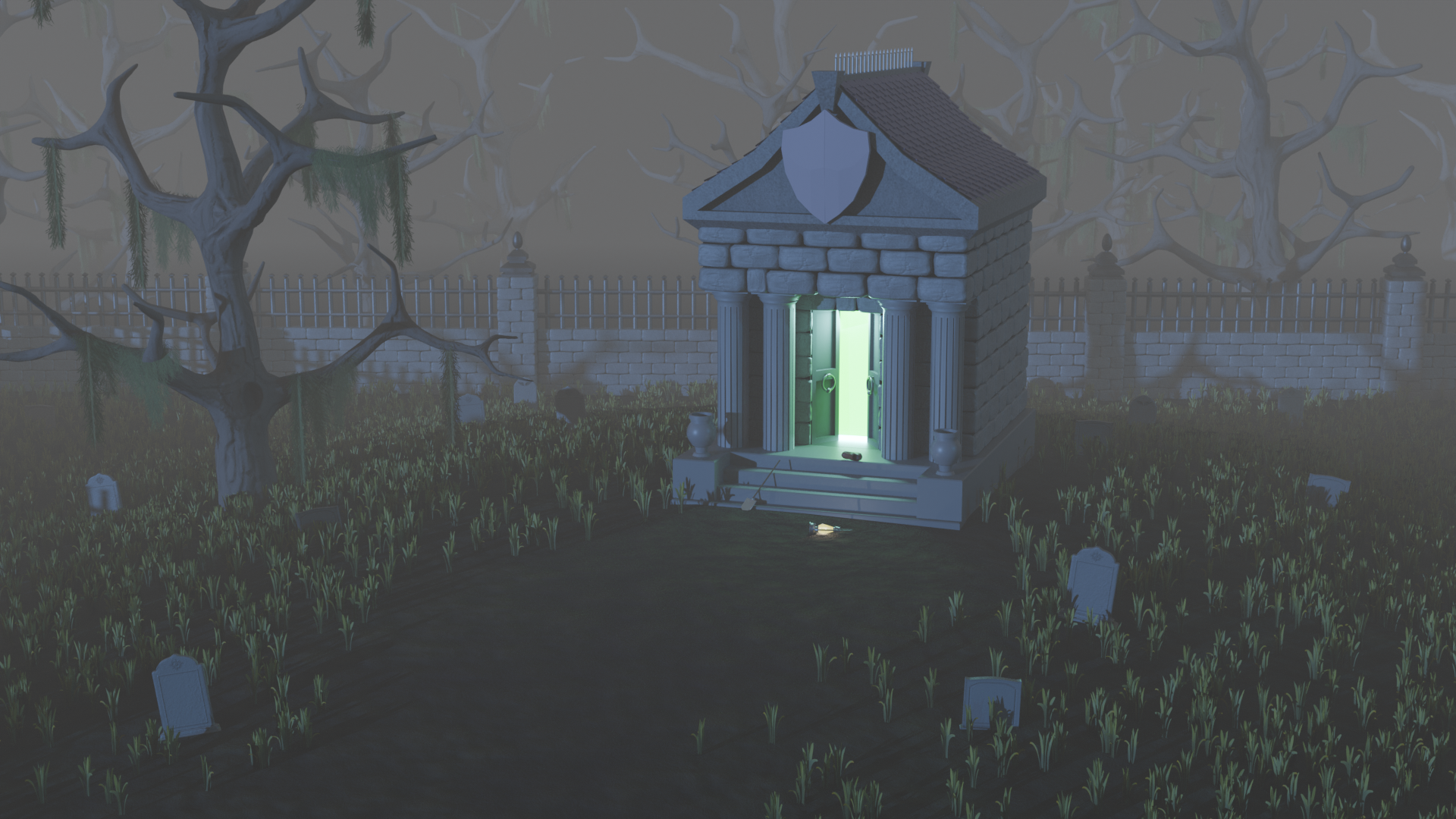Notes
Backup Management
At the end of the year we shipped a big update to our internal tool (I briefly wrote about it before). The goal: give teammates sane, usable access to backups of customer apps. In a SaaS company, everyone needs backups all the time — dev, QA, incident investigations, you name it. Without proper tracking the whole thing turns into a petting zoo: three people, same moment, three requests for almost identical copies of the same database. Sure, it "works", but you end up chewing through 3x the resources for zero extra value.
We did have a solution built on top of the Bitrix UI, but due to, uh... the unique "evolutionary path" of that product, it delivered more pain than gain. So we rethought the workflow and rewrote everything. Frontend is 1C; backend is PostgREST, PostgreSQL, PowerShell, and a bunch of other bits and bobs. The internal logic is fairly gnarly, but for the user it's a clean, friendly UI where you can request a backup in literally two clicks.
You can pick one of three backup types:
- Cloud backup (a copy of the real app deployed in the cloud and accessible — including via the browser);
- File backup (a regular .dt file you can download and spin up locally);
- Configuration + extensions backup (.cf + .cfe).
Also, the new solution detects when someone tries to request a backup for an app that's already being generated right now. And it rate-limits things too: you can't back up the same app more than once per hour.
And yes — we're still sneaking jokes into the UI. Obviously.
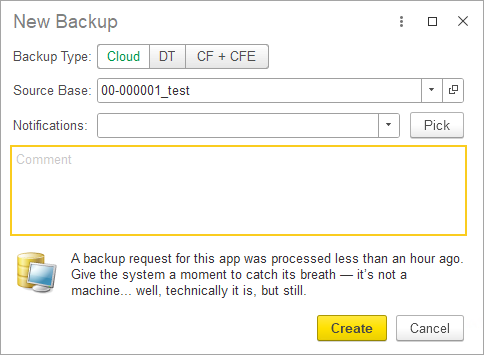

Desire Paths
Alright, Jean Fresco's riddle. You've got a table — say, ~50k rows. How do you end up reading half a billion?
Easy-peasy: Nested Loops + Clustered Index Seek:
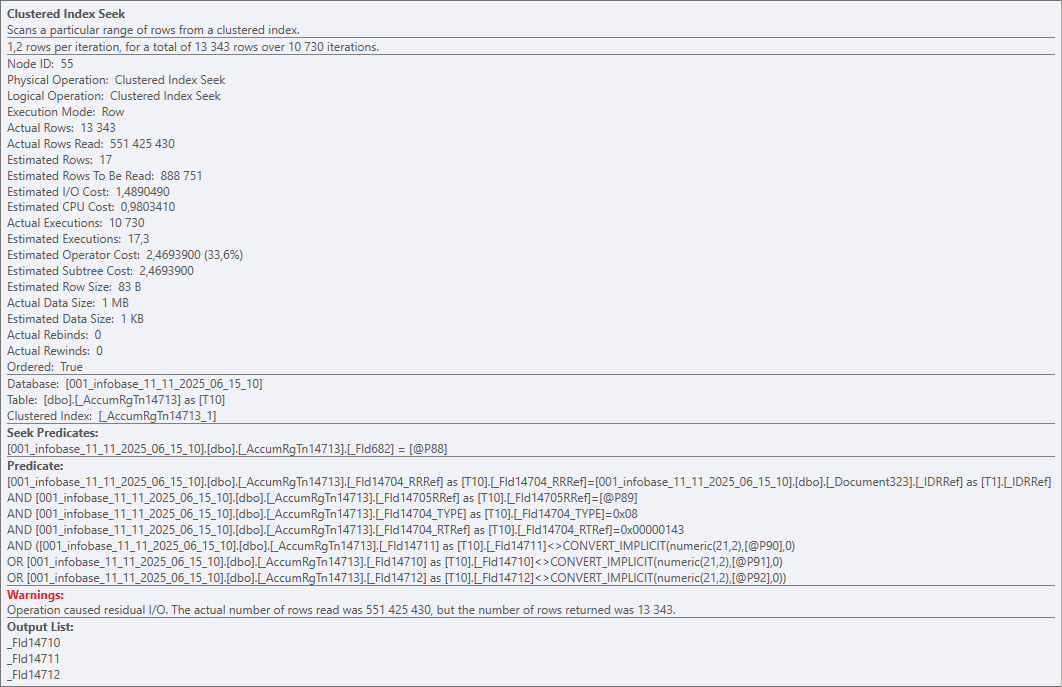
Clustered Index Seek is a bit of a marketing name here, of course. In reality, on every execution the operator walks the entire table (the whole clustered index) and checks every row against the predicates. And it does that 10 730 times for 51 391 rows. Result: 551 425 430 rows read, 13 343 returned.

So yeah — a perfect textbook example of a horrible query plan in a vacuum. Put it in a museum. Nested Loops, if you've forgotten, works roughly like this:
For Each Table1Row In Table1 Do
For Each Table2Row In Table2 Do
...
That's fine for small tables, but the DB can also pick it for bigger ones — for example, if it runs out of time to build a proper plan.
That's exactly what happened here. Zooming out to the platform level: we've got a dynamic list that queries a documents table, and the devs bolted on like a dozen virtual tables from accumulation registers.
Some of those registers were huge on their own, and the virtual tables poured gasoline on the fire (each one turns into 2+ nested queries). The DB honestly tried to come up with an efficient strategy, but at some point it basically decided: "a garbage plan is still better than no plan at all".
And the user? They tried to search a document by number — and the client app just straight-up froze.
So, about virtual tables in dynamic lists. There's a nice English phrase: "desire path" — the trail people naturally carve because it's the easiest way. Slapping a virtual table onto the main one really is often the simplest, fastest, most familiar way to solve the task. But it's not efficient.
There's an alternative, for example the OnGetDataAtServer() handler. It takes longer to implement, but it lets you properly tune the virtual table and avoid the scenario above. Scrolling the list will produce more queries, sure — but they'll be smaller, faster, and way more efficient than one single giant monster query.
29 November 2025 1С work optimization
Food Diary In Obsidian Bases
I've rebuilt last year’s plugin with Obsidian Bases — it now tracks calories, protein, fat, and carbs in your food.
The result is way more flexible and customizable than the plugin version: if you suddenly decide you want to count fiber as well or just shuffle some columns in the report, you don't have to rewrite, rebuild, or release anything. You just tweak it to your heart's content.
And it doesn't look half bad either:

All the necessary settings and scripts live in the GitHub repo.
Well, There Are Some
I'm out for a walk in the evening, and behind me there's some mom and her little kid — about five years old, I guess. I don't see them, I just hear them talking. The mom is explaining university to the kid: that you have to get in, study, there will be exams and all that.
The boy is quiet for a bit, then says sadly:
— I thought there was only school, but it turns out there are more difficulties too...
17 November 2025 meanwhile
Harmless Harm
The other day my colleague and I were debugging an issue, nothing fancy, just another "why is this query behaving weird?" moment.
Simplified, the idea was: we read a table from the database and dump the result into a temp table. If a certain condition is met, we still want the temp table to be created, but it must be empty (regardless of whether the source table has rows or not).
The query looked roughly like this:
SELECT
Table.Field1 AS Field1
FROM
Table AS Table
WHERE
&Parameter
If we needed to copy rows from the source table into the temp table, we passed TRUE into the parameter; if we wanted the temp table to be empty, we passed FALSE.
Looks simple at first glance, but this trick is a silent performance foot-gun if the table being read is large.
The reason is how DB engines work with parameterized queries. Both MS SQL and PostgreSQL build the execution plan based on the query text, and in this example the parameter value does not affect the decision of whether the table should be read or not.
As a result, when this query runs, both engines will pedantically scan the whole table (or its index), even if the parameter is FALSE. In that case each row is just discarded, so the logic is technically correct, but we're wasting resources on a pointless scan and polluting the buffer cache, slowing down the system overall and diligently contributing to global warming :)
The fix is simple: inline TRUE/FALSE in the query body as a constant instead of using a parameter. Or use TOP so the query text is even simpler:
SELECT TOP 0
Table.Field1 AS Field1
FROM
Table AS Table
At the SQL level this turns into something like "SELECT TOP 0 ... FROM Table" for MS SQL and "SELECT ... FROM Table LIMIT 0" for PostgreSQL. The final plan will still contain a read operator, but the executor won't actually request any rows, so there's no real data scan (yay).
P.S. If you don't care about having proper column types in the temp table, you can even do this:
SELECT TOP 0
UNDEFINED AS Field1
The performance gain, however, is so tiny that it's probably not worth over-optimizing for this. There are better hills to die on.
16 November 2025 1С PostgreSQL MS SQL
Voodoo
Looks like we finally caught our first lab-reproducible case of platform cache corruption. Short synopsis:
- Spin up a fresh app from the v35 template of our ERP.
- Run it and wait for initialization to finish.
- Swap the app configuration to the v36 release (specifically build 28537 from the dev repo) and run it again.
After this super simple sequence, about half the team sees the platform suddenly lose one of the enums. And it's annoyingly selective: hit an enum value on the client — all good; do the same on the server — boom, exception.
Same story with the manager module of one catalog: its methods exist and are exported, but after the update the platform pretends they don't and throw an exception when you call them.
As always, when the magic blooms — look at the cache. Clear it and symptoms vanish. There are indirect hints too:
- The enum did exist in v35, but it was renamed in v36.
- Those manager-module methods didn't exist in v35 (they were added in v36).
So the v35 cache didn't contain either of these in their v36 identities, yet for some reason the platform insists on digging into that old cache.
We still don't have a clean root cause. We traced it to a specific commit after which the bug started showing up, but the only weird thing there its its name (and honestly, there are nearby commits that look even more suspicious from this point of view). The rest were minor changes that regenerate internal metadata IDs in the manifest. Yes, those IDs are tied to cache keys, but they get bumped on any metadata change and have never caused issues before.
If you landed here from Google because you hit the same mess — make a no-op change to the problematic object so the platform refreshes the metadata IDs in the manifest. For example, add an empty method or even just a space in the module. That fixes the configuration so the recipe at the top stops corrupting the cache.
Voodoo, sure — but hey, it works ¯\_(ツ)_/¯
Slow Removal of Fresh Areas
A colleague noticed that on one of our Fresh instances, deleting data areas had become painfully slow. Dug into the metrics:
DELETE FROM T1
FROM _DataHistoryMetadata T1
WHERE
T1._MetadataId = ?
AND T1._IsActual = 0x00
AND NOT (
T1._MetadataVersionNumber IN (
SELECT T2._MetadataVersionNumber AS MetadataVersionNumber_
FROM _DataHistoryVersions T2
WHERE T2._HistoryDataId IN (
SELECT DataHistoryLatestVersions1.DataHistoryLatestVersions._HistoryDataId AS HistoryDataId_
FROM DataHistoryLatestVersions1.DataHistoryLatestVersions T3
WHERE DataHistoryLatestVersions1.DataHistoryLatestVersions._MetadataId = ?
)
)
)
Each of these queries was reading around 20GB. What's happening is mostly clear: the platform is trying to delete an area's data history, but the janky DB query causes a full scan over the whole history table across all areas instead of using an index. Someone on Dmitrovskaya got lazy again.
So we were losing between 30 seconds and a half an hour per operation. Wanted it faster. Fix:
CREATE NONCLUSTERED INDEX IX_DataHistoryLatestVersions1_MetadataId ON dbo._DataHistoryLatestVersions1 (_MetadataId) INCLUDE (_HistoryDataId) WITH (DROP_EXISTING = OFF, ONLINE = OFF); CREATE NONCLUSTERED INDEX IX_DataHistoryVersions_MetadataVersionNumber ON dbo._DataHistoryVersions (_MetadataVersionNumber) WITH (DROP_EXISTING = OFF, ONLINE = OFF);
Deletion cost predictably dropped ~99%.
If you're going to repeat this on your side:
- Technically this violates the license agreement, you've been warned and all that.
- There's a risk the platform will trip over the new indexes during future restructurings (especially on the "new" schema). Better to have a ready script to drop the index, and then (after restructuring) put it back.
Myth Buster
I stumbled upon a hefty Infostart article all about "debunking myths" around the platform.
Honestly, about half of it reads like a joke. It's like:
Hot off the press! Crime, intrigue, investigations! File‑based infobase is faster than client-server! DCS is slower than a plain request! Calling a server method on the server counts as a brand-new server call!
UFO over Red Square!
Still, there are some genuinely interesting nuggets! For instance, I'd never heard the claim that cramming your code into one single line makes it run ten times faster. Too bad you'd get your ass handed to you by the team for trying that kind of desperate swag before you even get to celebrate the speed boost. And let's be real — most enterprise app slowdowns usually come from totally different places.
Or take their speed comparison for dumping data into a table: one test for object presentations and another for their descriptions. The presentation dump was literally tens of times slower! On paper, that sounds weird — both are just strings already pulled from the database at measurement time. My guess is it's down to typing: presentation strings can be unlimited length, unlike descriptions. So you get extra memory allocations, helper structures popping up, and bam — that's where the slowdown creeps in.
P.S. I've jotted down some of these points myself before. Off the top of my head — I remember benchmarking ValueIsFilled() and getting a nasty surprise from the built‑in FindByNumber().
27 Jule 2025 1С
Geometry Deletion
I figured out a cool trick for cutting off parts of an object when it intersects with something else. Like, in this gif, there’s a monkey head model in the center, and as a plane moves through it, the part that intersects just disappears.

The idea is pretty simple: you shrink the geometry of the "cutter" object down to a cube, get its min and max coordinates along each axis, and then for every point on the object you're trimming, you check whether it falls within that range. If it does — boom, it gets deleted.
There are tons of ways you could use this. For example, I used it to automatically trim parts of decorative music staff lines on a wall so they wouldn't go across a doorway.
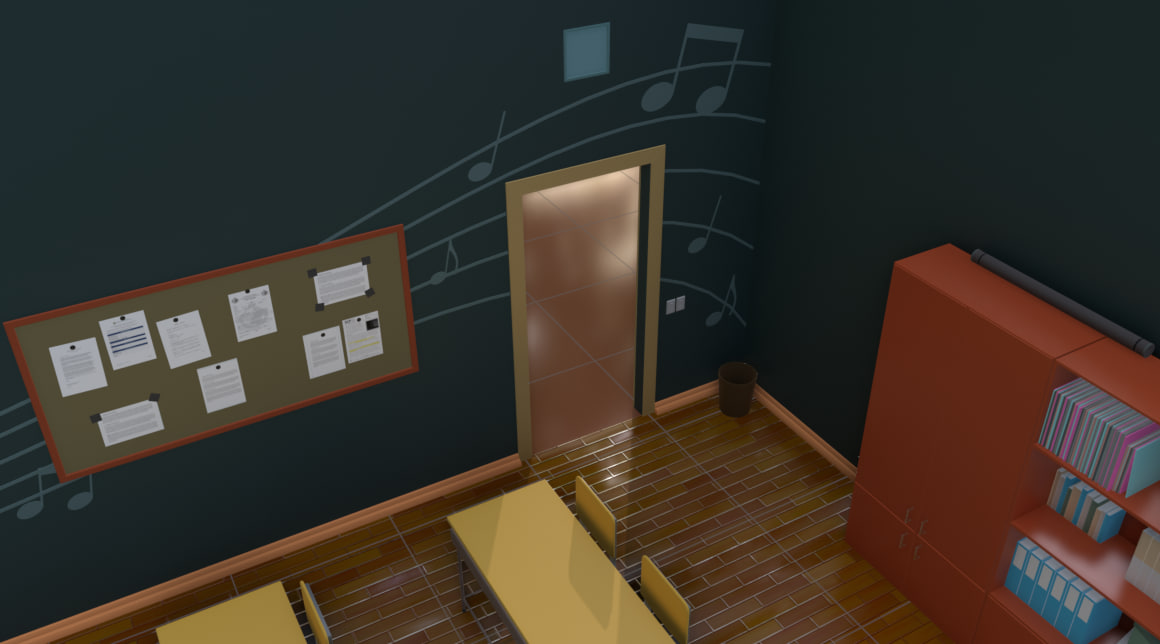
Sure, you could do it by hand, without geometry nodes, but that would kill flexibility. If the wall size, door size, or the angle of the lines changes — you'd have to redo everything from scratch.
12 June 2025 3D
No

This is the message the current platform throws up when you try to connect to an offline server cluster. I do appreciate minimalism in interfaces, of course, but this is definitely over the top.
What's more, the platform is installed with only a single language pack (English) and even launched with a hard override to "Ven VLen", yet somehow the native birches still manage to sprout up. Maybe the C++ library that fires off the message (DataExchangeTcpClientImpl.cpp) is looking at the OS language (Russian) in my case — hard to say.
Anyway, I can't shake the Bugs Bunny vibes every time I see that dialog box.

The Genie Problem
Returning to Volka's room, the old man turned round slyly, snapped the fingers of his left hand, and there appeared on the wall over the aquarium an exact copy of the telephone hanging in the hall.
"Now you can talk to your friends as much as you like without leaving your own room."
"Golly, thanks a lot!" Volka said gratefully. He removed the receiver, pressed it to his ear and listened. There was no dial tone.
"Hello! Hello!" he shouted. He shook the receiver and then blew into it. Still, there was no dial tone.
"The phone's broken," he explained to Hottabych. "Let's unscrew the receiver and see what's wrong."
However, despite all his efforts, he could not unscrew it.
"It's made of the finest black marble," Hottabych boasted.
"Then there's nothing inside?" Volka asked disappointedly.
"Why, is there supposed to be something inside this, too? Just like in a watch?"
"Now I know why it doesn't work. You've only made a model of a telephone, without anything that's supposed to go inside it. But the insides are the most important part."
"The Old Genie Hottabych", Lazar Lagin
When I’m doing 3D modeling, I often feel like that genie. He also tried to mimic the shape of things and jazz them up, but always ended up failing ‘cause he hadn’t got a clue about what was inside.
I’m just the same. For the past month, I’ve been putting the finishing touches on a model of a school music room, and guess what? I’ve learned more about how pianos work than I have in my whole life before. I could even give a quick lecture on heating systems in Russian schools — talking about sectional, panel, cast iron, and aluminum radiators, which types pop up most, the spacing between them, why you shouldn’t hook up three in a row, and so on.
I read about this effect: like when you're drawing, say, samurai armor — you end up inadvertently learning heaps about the properties of leather, the different kinds of metal, and the whole tech stack of the samurai era. I never thought I'd run into that from day one — but hey, I think it's a good thing. It fires up your neural connections, broadens your view of the world, sparks your creativity, and all that jazz.
Plus, it’s way more fun working on a model when you actually know what’s going on under the hood.
12 April 2025 3D
Easter Eggs
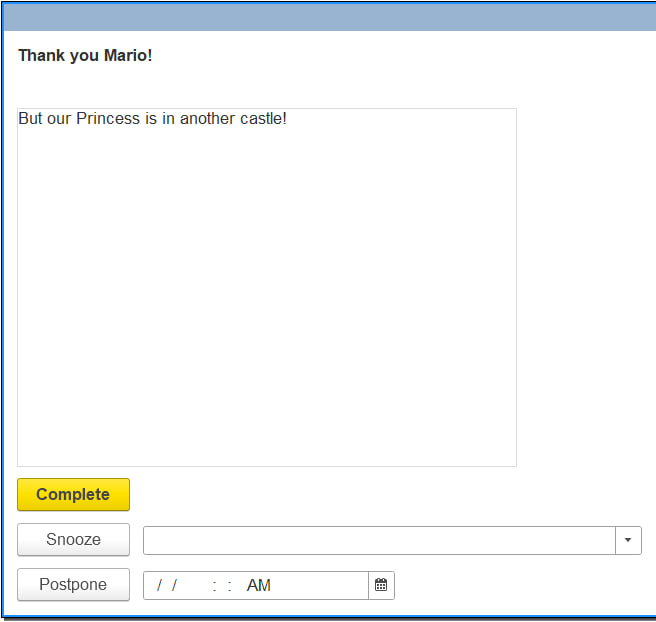
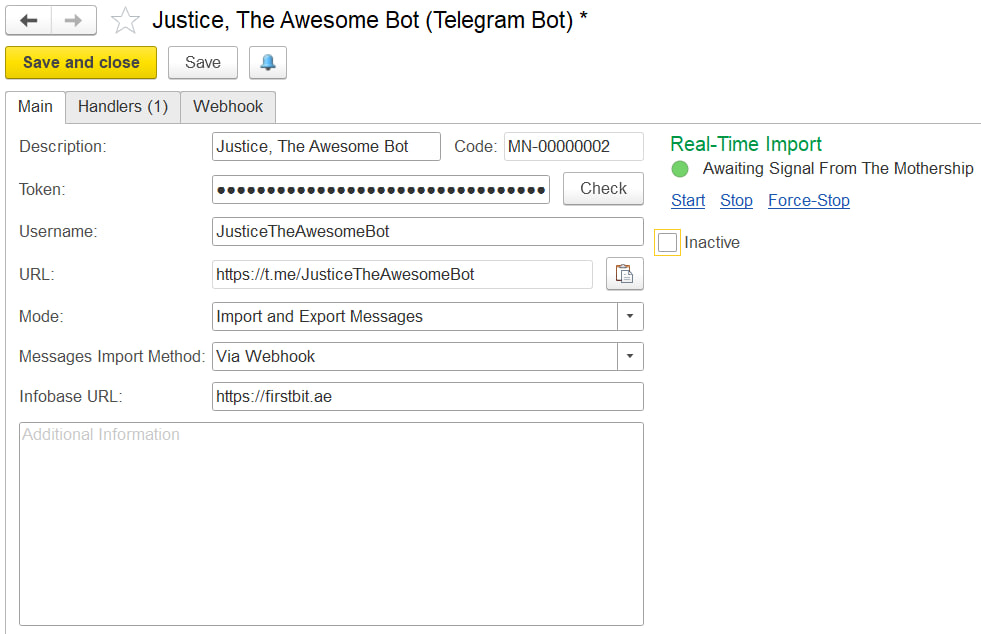
A couple of Easter eggs hidden inside FirstBit ERP. They're tucked away for the developers: in the first case, users see just the form title and notification text, while in the second, they see the standard "waiting for connection" message.
I like to add little things like this from time to time — it helps to keep things fun, even when the task isn’t the most exciting or I’m just feeling tired. If you haven’t checked out Bystronovsky’s "Design Without Stress", you really should — no way I could explain it better myself.
By the way, here’s another Easter egg! Not from our ERP this time, but from a new tool we’re making for automated database updates. We're building it just for ourselves, so we can joke around with the user a bit :)
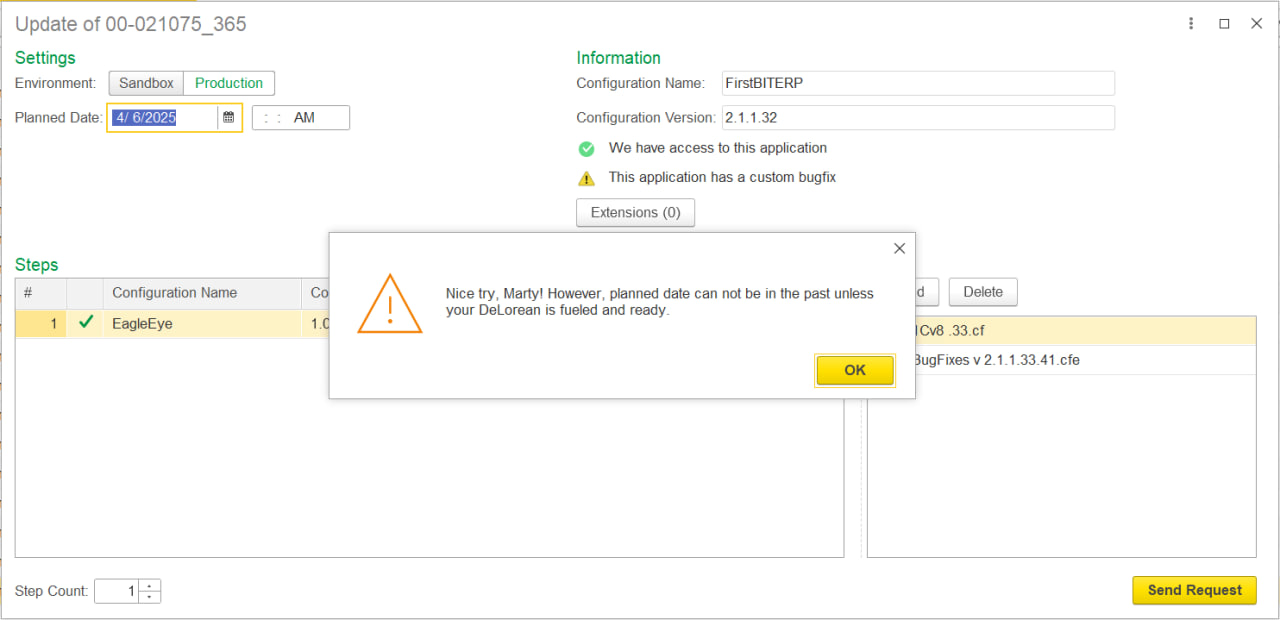
6 April 2025 work
ERP Development In English
Our lead developer recently shared some insights about our work — specifically, developing ERP systems on 1C for the UAE and, more recently, Saudi Arabia. The session was hosted by the online English school Across, so the audience was spot-on: Russian-speaking folks interested in building careers and exploring international markets.
Overall, it turned out pretty cool, especially as a language practice. Just a reminder: learning foreign languages is still one of the best ways to give your brain a workout, and it’s also super accessible. There’s no shortage of resources, communities, and interest-based clubs out there — you just need the motivation :)
Mysterious Code

Somewhere on the streets of Tbilisi. As a big fan of the Dishonored series, I just couldn’t walk past this. I’m sure there’s a safe nearby that this code unlocks!
18 January 2025 Georgia videogames
Go Away, Negativity!
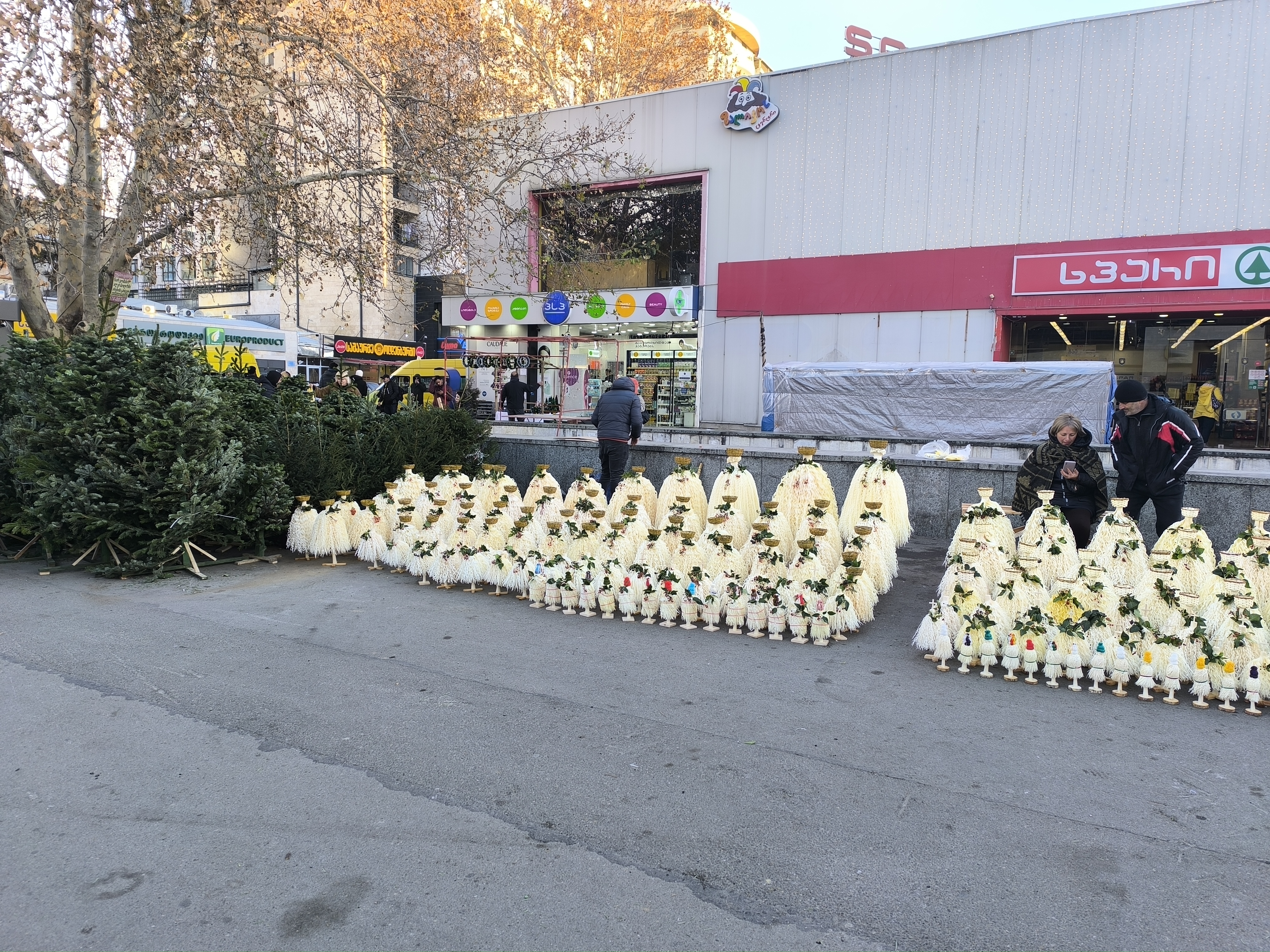
The white things in the background are called chichilaki. It’s a kind of Georgian New Year tree (in practice, it’s finely shaved hazelnut branches). It’s believed to absorb all the accumulated negativity, so after the holidays, it’s supposed to be burned (along with the negativity).
Turns out, that last part is a bit of a challenge. The local police (and especially the fire department) view this good old tradition with suspicion — and understandably so (a chichilaki can be as tall as a person, making it quite the torch). So, we were advised to simply toss the "negativity-charged" chichilaki into the trash to avoid getting fresh troubles. Or donate it to the zoo — apparently, the animals play with them and even use them to clean their teeth.
That last part made me smile. Getting rid of negativity with the help of cats — what a surprise. Big, toothy cats, sure, but still cats!
A Little Bit Of Surgery
A few years ago, I stumbled upon a story about a programmer who had to debug software controlling a surgical robot — right in the middle of an operation. That blew my mind, to be frank.
Today, my colleague and I were fixing a 1C cluster with databases running on 1cFresh. After migrating it to a neighboring server, the thing suddenly started acting up. Long story short: trying to print a document would send the client app into its death throes.
While we were knee-deep in troubleshooting, I had this thought: sure, it doesn’t look as terrifying as debugging software that someone’s life literally depends on. But if you think about all the clients sitting on edge because their business is grinding to a halt... Well, who knows where the stress levels are higher?
P.S. Nerdy details for the curious. During the migration, the permissions for the server cache folder didn’t transfer properly. This led to a funny (well, not so funny) effect: the logs would happily land there, but session data wouldn’t.
So, when someone opened a print form, the configuration tried saving it to the storage, and rphost, in turn, attempted to shove it into the session cache. Here’s where things went sideways: the worker' process (probably) got slapped on the wrist by the OS. Due to (apparently) some funky file system event handling in the platform, the exception wasn’t caught, so the poor thing had no better idea than to kill the session. Naturally, this caused the client process to crash.
We fixed the permissions, rebooted the cluster, and voilà! The problem was gone.

All other hypotheses — cluster manager acting up, lack of hardware resources, configuration bugs, client-side issues, broken security profiles, network problems between the client and server — got tossed out during the diagnostics process.
Vaguely Familiar Logo
Meanwhile, OpenAI opened a branch in Tbilisi Actually, they just sell vapes here, and the logo designer was probably inspired by clouds of steam. But every time I walk by, it still catches my eye :)

Creepy Graveyard
Still learning 3D in my free time. Here's my first somewhat independent project after finishing a course recently.
Of course, there are plenty of issues: the models, the colors, the composition... Honestly, pretty much everything. Good thing the scene is set at night with fog, so it's easy to hide the worst spots. I wouldn't be surprised if the course creators picked this setting on purpose to keep beginners from getting too discouraged :)
That said, I'm happy with the result. At this stage, perfectionism feels more like an enemy than a friend. And hey, it’s definitely better than my last attempt! Back then, I was totally green in Blender and scared to deviate even slightly from the instructor: ten minutes of watching, ten minutes of copying.
That approach works at the very beginning, but it doesn't help you learn how to solve problems. This time, I watched a few lessons back-to-back for about an hour or two, then tried to figure things out on my own. I only went back to the videos when I was completely stuck. Feels like I’m actually retaining a lot more this way.
Long story short, the thing is done. On to the next one!
UPD: One of the founders of FlippedNormals recorded a video with the same thoughts about training.
Summary to Slack
I found a script that I wrote a couple of years ago for our work GitLab. In short, we run our development repository through a barrage of tests on Vanessa daily, resulting in a nice report showing how many tests passed, which ones failed, the reasons for failures, and so on.
The report needs to be analyzed regularly, at least at a glance. Of course, we haven’t seen fully "green" tests in a long time, and that’s expected: for example, in the case of interdependent development, commits can break the checked functionality, and the tests still need adjustments. However, keeping a pulse on it is still essential.
To simplify this routine, I expanded the pipeline code a bit: after generating the report, GitLab first creates a brief summary (client type, database type, test statistics) and sends it to Slack.
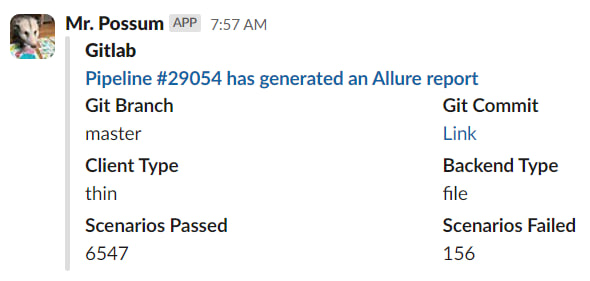
As a bonus, it’s now easier to answer the philosophical question, "who broke everything". Most often, it’s the author of the first commit on which the Scenarios Failed metric in the screenshot above hit the ceiling :)
10 November 2024 work done PowerShell
Log & Bug
I love digging into the origins of words from time to time. For example, "log" comes from maritime terminology and literally means a log: a wooden float attached to a rope, which was thrown overboard from a ship. The rope had knots tied at regular intervals, and by counting how many knots unwound in a certain amount of time, sailors could determine the speed of the ship.
These measurements were recorded in the ship's journal, which was also called a log. Over time, the term started being used for any kind of record or journal of events, and in IT, the word got a second life :)
Or take "bug" — well, you’ve probably heard about this one. A moth, which messed with a computer’s operation over seventy years ago, was documented in the log as "the first actual case of a bug being found". The insect gained a kind of digital immortality: now any mistake, especially in a program, is called a bug.
(It’s just a pity that it wasn’t a prettier insect — like a butterfly, for instance? That would’ve added a touch of romance to our work)
(Though, if you think about it... maybe "bug" isn’t such a bad option after all. "Butterfly" is a bit too long. Besides, someone would’ve shortened it to "butt," and right now, we’d be fixing butts instead of bugs)
12 October 2024 English
Earlier Ctrl + ↓


